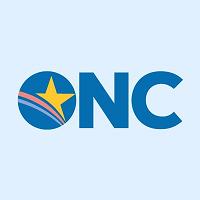 Can Providers and Patients Access and Share Health Data via Apps?
Can Providers and Patients Access and Share Health Data via Apps?
By Catherine Strawley and Wes Barker, ONC
X: @ONC_HealthIT
Thanks to a decade of effort, nearly every U.S. hospital today stores health data electronically. To put that data to work, however, clinicians and patients need to be able to access and appropriately share that data.
To implement the 21st Century Cures Act and help meet those needs, ONC’s Health IT Certification Program adopted new requirements and standards for application programming interfaces (APIs) that support the secure exchange of patient data between electronic health records (EHRs) apps.
To assess the progress hospitals have made in using APIs to share data with patient and provider apps, we examined survey data from the 2020 and 2022 American Hospital Association (AHA) Information Technology Supplements. In the newest survey fielded in 2022, ONC posed additional questions to assess hospital use of APIs for the purpose of exchanging data with apps used by clinicians.
Information Sharing Is on the Rise
Encouragingly, hospitals have made significant progress in enabling data sharing between their EHRs and apps – particularly larger facilities and those affiliated with a healthcare system. According to the data, 4 in 5 non-federal acute care hospitals use APIs for three key functions: to enable provider apps to write data to and read data from the EHR, and to grant patient access to EHR data through patient-facing apps.
This widespread adoption of APIs helps to improve patient access to their health information, an important step toward greater patient engagement in health decision making; it also provides clinicians access to the information needed to inform care decisions.
Speaking a Common Language
To realize benefits like improved patient access, interoperability, and privacy/security, APIs must share a common language. Here again, there are encouraging findings.
At the end of last year, more than 95% of certified Health IT developers met the requirements for standards-based APIs that went into effect in 2022. We also saw encouraging signs of hospital adoption of standards-based APIs, as the rate of non-federal acute care hospitals using Health Level Seven (HL7®) Fast Healthcare Interoperability Resources (FHIR®)-based APIs for patient access grew by 12 percentage points in just one year.
Continued Disparities in Adoption
Along with this admirable progress, there are disparities to note in 2022. AHA data revealed that API adoption rates are lower among hospitals that do not use one of the top 3 EHRs by market share, smaller hospitals, and independent hospitals. These types of facilities are less likely to use FHIR APIs for patient access, less likely to use APIs of any kind to collect patient-generated health data, and less likely to enable clinician apps to read or write EHR data and read non-EHR data.
However, we expect these gaps to continue to close now that developers of certified API technology have met their ONC Health IT Certification Program requirements to update and provide FHIR-based APIs to their customers (by the end of 2022), and such customers deploy this new capability in 2023 and beyond.
What’s Next?
Data exchange plays an important role in improving the efficiency and quality of healthcare decision making (by providers and patients alike), and we’re encouraged by the high rates of reported API use by hospitals to share data between EHRs and apps. We will continue to assess the adoption and use of APIs and more specifically, standards-based APIs, and use the results to help inform policy to address any identified limitations and barriers. We look forward to continuing to monitor and report on hospital use of APIs, as we expect adoption of standards-based APIs to increase in years to come.
Read our full data brief for an in-depth look at the findings and insights.
This article was originally published on the Health IT Buzz and is syndicated here with permission.
